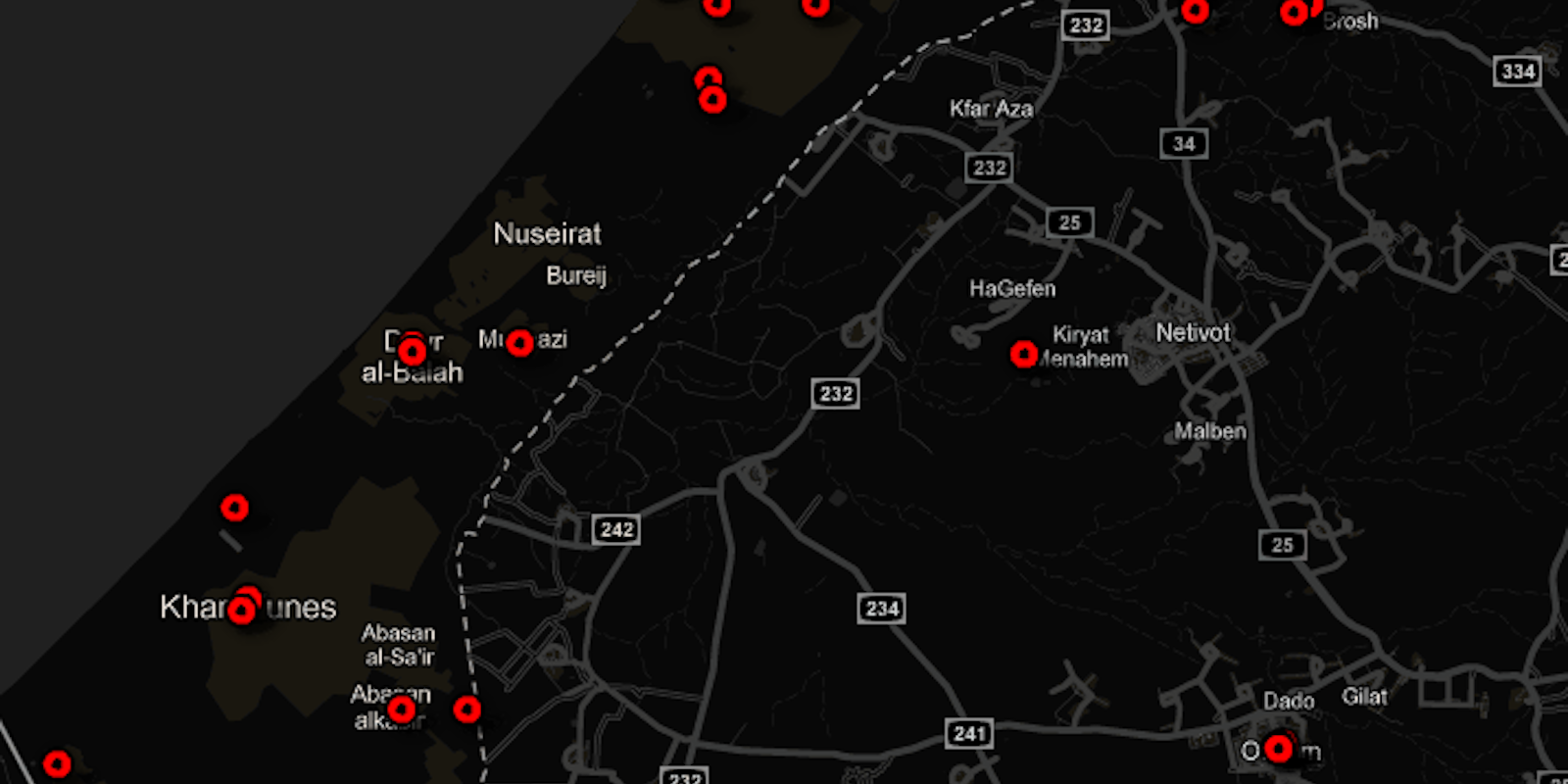The blossoming of violence between the state of Israel and Gaza-based Hamas militants began in earnest last week with Israel’s targeted assassination of Hamas leader Ahmed al-Jabari. Since then both parties have been firing missiles at one another. Israel has even been firing missiles at other missiles, using a defense system called the Iron Dome.
It’s a mess of violence made even harder to understand by the proliferation of online war propaganda from both sides. That’s where the Guardian’s Datablog comes in. It’s attempting to map every verified missile strike over the last week.
Based on Google’s mapping software, the project is crowdsourced, in the sense that a reader can report an incident via email at data@guardian.co.uk, or by using a Google form. Simon Rogers, Datablog’s editor, told the Daily Dot that they’re seeking “stuff that is verified, i.e., there’s a link to a decent media source or a pic that we know is OK.”
Presumably, these incidents have a better chance of being accurate if they’re reported by people with no vested interest in the conflict.
Each strike is indicated by a red dot, which, once clicked, launches a dialogue box outlining the location of the strike, the number of wounded and property damage, if any, and photos or videos, if available.
A click on one of the crowded central Gaza buttons, for instance, brings up Deir al-Balah: “Three killed on strike on a civilian car,” attributed to a story by Ynet. Click on a button near Tel Aviv and you read, “Two rockets from Gaza crashed near Tel Aviv on Thursday evening in the first such attack on Israel’s commercial capital in 20 years. One fell into the Mediterranean Sea and the other in an uninhabited part of a suburb south of the city,” whose source is a story by the Guardian itself.
Map data may be downloaded as a Google Fusion table.
Photo via Datablog/The Guardian


